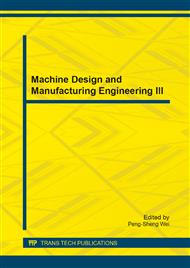p.547
p.551
p.556
p.561
p.565
p.569
p.573
p.577
p.581
Numerical Simulation of In-Pipe Turbulent Noise
Abstract:
Numerical simulation is used to explore the turbulence noise in pipes generated by high-speed fluid. The characteristics of turbulent noise and its influencing factors are analyzed for different pipe structures and flow rates. The results showed that there is a parabolic relationship between the Overall Sound Pressure Level (OASPL) and the flow rate as the flow rate increases in the pipe. The OASPL of a variable diameter pipe is 20dB higher than that of the straight pipe with a built-in cylinder under the same flow rate. The structure of flow around a cylinder can effectively weaken turbulence noise and reduce high-frequency noise.
Info:
Periodical:
Pages:
565-568
Citation:
Online since:
July 2014
Authors:
Price:
Сopyright:
© 2014 Trans Tech Publications Ltd. All Rights Reserved
Share:
Citation:


